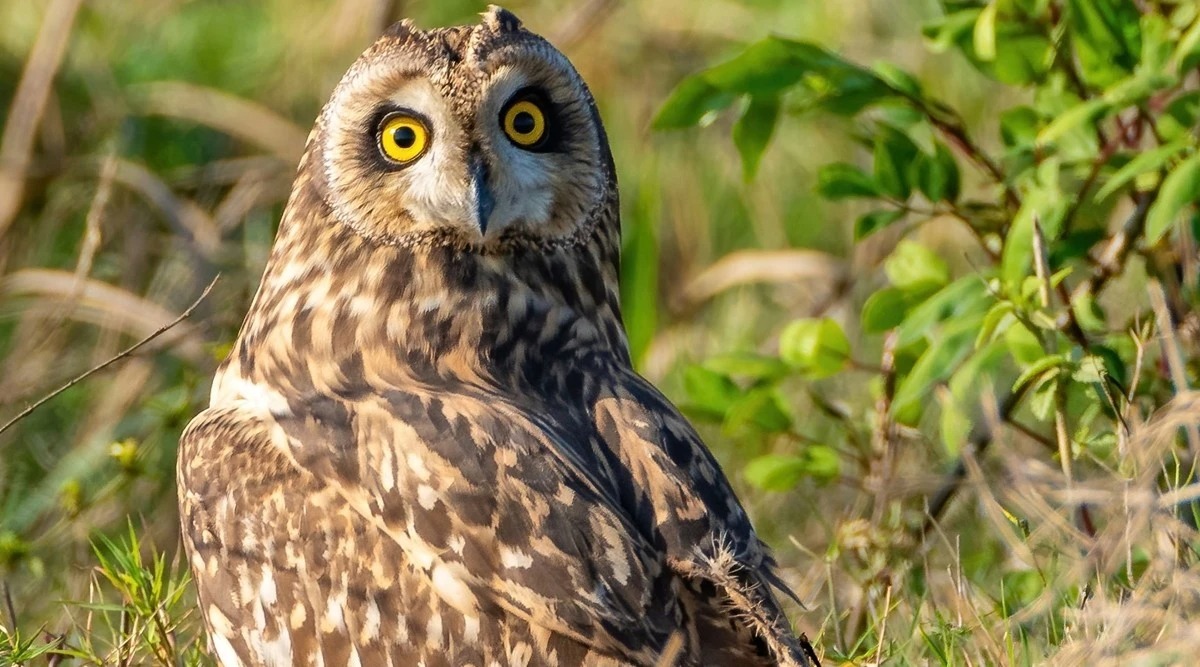 The researchers found out that owls did inhabit cemeteries but not due to their affinity for morbidity but because of the “favourable conditions” on those premises. (Twitter @WildlifeMag, representational)
The researchers found out that owls did inhabit cemeteries but not due to their affinity for morbidity but because of the “favourable conditions” on those premises. (Twitter @WildlifeMag, representational)For far too long, owls have been associated with death and considered an ill-omen by many. To investigate the cause behind the uncomfortable link of the nocturnal bird with human death, researchers from Pune University’s Department of Environmental Sciences, KEM hospital and Ela foundation recently undertook a pilot survey of 57 cemeteries in Pune district. The researchers found out that owls did inhabit cemeteries but not due to their affinity for morbidity but because of the “favourable conditions” on those premises.
“These fascinating birds are one of the most misunderstood taxa all around the world. In our part of India, there are several superstitions around owls such as: owls hear what ghosts speak, owls are witches, seeing or hearing an owl is an ill-omen, owls catch stones thrown at them and as they rub them, the person who has thrown the stone gradually dies. In some areas of Maharashtra, the owl is known as ‘Madhe Pakhru’, literally meaning a ‘corpse bird’. Owing to these superstitions, people may try to harm them,” Dr Satish Pande, principal investigator of the study and professor at the Department of Environmental Sciences, Savitribai Phule Pune University, told The Indian Express.
As part of their study `Owls and cemeteries: owls are not ghosts’ published in the Ela Journal of Forestry and Wildlife early this year, researchers surveyed cemeteries belonging to three religious communities: Hindu (n=48), Muslim (n=7) and Christian (n=2). Each cemetery was visited three times at dawn and dusk by researchers Rajurkar Sudhanawa, Lonkar Rahul, Bhujbal Avishkar, Madane Pandurang and others. The researchers documented the time since the cemetery was in use, the distance of the cemetery from human habitation, the tree species on the premises, status of maintenance of the cemetery and the presence or absence of owls in the cemetery and the timing of their presence. The cemeteries were in use for an average of 100 years, researchers found.
“Several old cemeteries are not regularly maintained. Vegetation, grass, shrubs, and climbers were observed to grow in abundance and provided favourable habitat to reptiles, rodents, and birds, which in turn were food for owls. We found that such cemeteries attracted owls,” Dr Pande said.
Subscriber Only Stories
According to the survey, owls were seen in 53 cemeteries. Among the recorded species included Spotted Owlet Athene brama (n=144), Barn Owl Tyto alba (n=30), Indian Eagle Owl Bubo bengalensis (n=13), Mottled Wood Owl Strix ocellata (n= 8), Brown Wood Owl Strix leptogrammica (n=2) and Barred Jungle Owlet Glaucidium radiatum (n= 2). Across cemeteries, there was an abundance of tamarind, peepal, banyan, Karnja, raintree and neem trees.
Researchers said that owls are correctly associated with cemeteries but wrongly associated with death. “It is obvious that whenever people visit cemeteries, they are likely to observe an owl either by site or vocalisation. People visit cemeteries only when their kith or kin had died, and owls inhabit cemeteries at all times because of the appropriate habitat that they offered,” according to the study.
“Educational programmes, however, should be undertaken at grassroot levels, to remove superstitious beliefs about owls. A larger survey of cemeteries should be conducted. In the absence of wider grass-root level education about owls, wrong perceptions shall continue to trouble both humans and owls,” Dr Pande said.